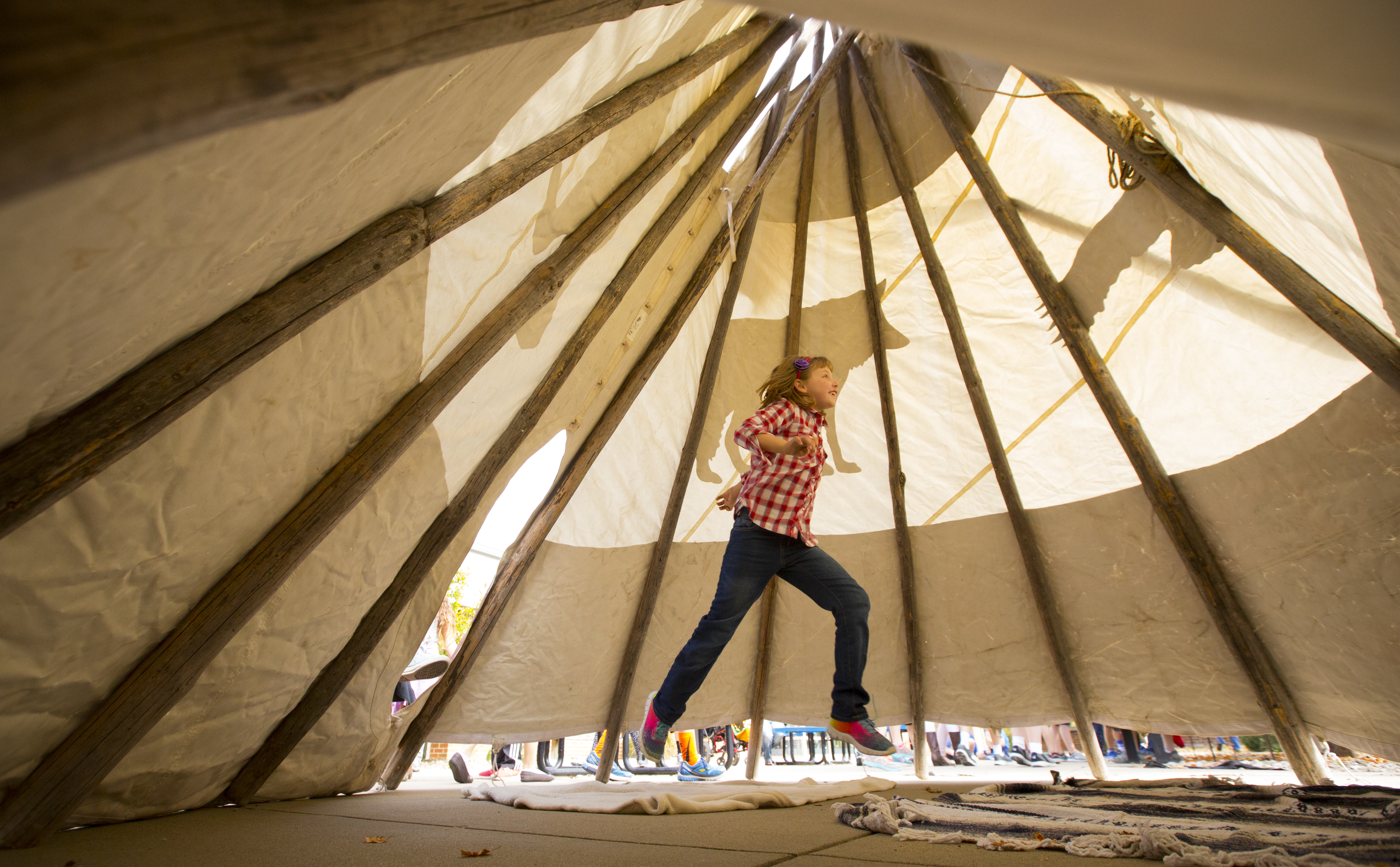Quail Run students get beyond the book with Native American history

Quail Run second-grader Ryan Toomay is the first of her classmates to head inside a tepee outside the school on Thursday, Oct. 15, 2015. The tepee was lent to fifth-grade teacher Brenda Meyers, who is teaching her social studies class about Native American history and cultures. The fifth-graders visited the tepee with their second-grade buddies, who have recently done a unit on the Native Americans of the plains region.
After six weeks of studying Native American history, Quail Run students take turns ducking inside a 15-foot tepee Thursday afternoon. The fifth-grade students have spent weeks researching different North American tribes and soon will make their own, much smaller versions of traditional dwellings — hogans, longhouses, wickiups — as part of model villages.
The villages, which are the final project of the six-week unit, will include elements representing the traditional clothing, food and culture of tribes from different regions in North America, explained fifth-grade teacher Brenda Meyers. Meyers said the students will make every part of the models by hand, and that the project helps the unit go beyond the dates and facts to the wider story.
“It helps put it on their level,” she said. “It shows how we are alike and different.”

Quail Run second-grader Ryan Toomay is the first of her classmates to head inside a tepee outside the school on Thursday, Oct. 15, 2015. The tepee was lent to fifth-grade teacher Brenda Meyers, who is teaching her social studies class about Native American history and cultures. The fifth-graders visited the tepee with their second-grade buddies, who have recently done a unit on the Native Americans of the plains region.
Another way connections are made between the students and the material is through the integrated library program, which is used in elementary schools throughout the Lawrence school district. As part of the accompanying library unit, the students learned about how Native Americans were forced to attend boarding schools and that Haskell Institute — now Haskell Indian Nations University — once served as one such school. The local element, along with reading a story about a Native American boy sent to boarding school, makes the topic more relatable, said Quail Run librarian Jenny Gorup.
“It’s really important for the kids because they see the local connection,” she said. “It’s good for them to see how things have changed in our own experience.”
Fifth-grader Eliza Shorter, who is part Cherokee and whose brother attends Haskell, said hearing about the boarding schools and how cultures were lost was the most interesting part of the unit. Researching the different Native American cultures was also important for her personally, she added.
“It kind of got me to know my mom better, and where I came from,” she said.
While the unit concludes next week when the students construct their model villages, as the school year goes on they will refer back to the lessons learned as the students study colonialism and westward expansion, Meyers said.
“It’s how we got to where we are today and who played a part in that, so kids know how things were shaped,” Meyers said.







